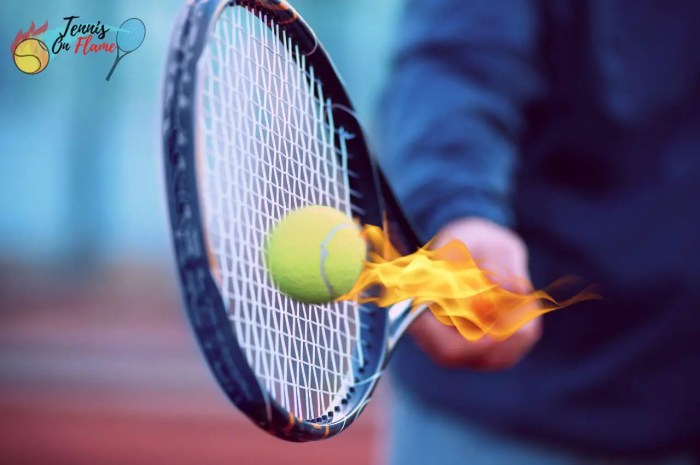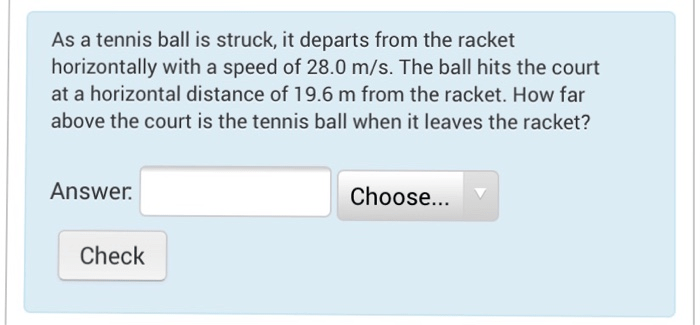As a tennis ball is struck and departs from the racket, it embarks on a trajectory that is influenced by a complex interplay of forces, materials, and design. This article delves into the physics of the impact, exploring the forces acting on the ball, the role of the racket’s surface and tension, and the impact on the opponent.
It also examines the trajectory and spin of the ball, the materials used in its construction, and the regulations governing its specifications. By delving into these aspects, we gain a deeper understanding of the nuances of tennis and the techniques employed by players to manipulate the ball’s path and spin.
Physics of the Impact

At the moment of impact, several forces act upon the tennis ball:
- Contact force:The force exerted by the racket on the ball, propelling it forward.
- Normal force:The force perpendicular to the contact force, preventing the ball from penetrating the racket.
- Friction force:The force resisting the ball’s motion along the racket’s surface, imparting spin.
- Gravity:The downward force acting on the ball, influencing its trajectory.
The racket’s surface and tension play crucial roles in determining the ball’s trajectory. A rougher surface increases friction, imparting more spin. Higher racket tension increases the contact force, resulting in a faster ball.

Trajectory and Spin

After leaving the racket, the tennis ball follows a parabolic trajectory influenced by gravity.
Spin imparted by the racket causes the ball to curve in the direction of its rotation. Topspin lifts the ball, making it drop more steeply on the opponent’s side. Backspin flattens the trajectory, causing the ball to bounce low and skid.
Impact on the Opponent

The ball’s speed, spin, and trajectory significantly impact the opponent’s response.
A faster ball requires a quicker reaction time. Topspin forces the opponent to hit up, making it difficult to control the shot. Backspin allows for more time to react and can create awkward bounces.
Examples of shots and trajectories:
- Flat serve:High speed, low spin, straight trajectory.
- Topspin forehand:Medium speed, heavy topspin, looping trajectory.
- Backspin backhand:Low speed, heavy backspin, skidding trajectory.
Materials and Design

Tennis balls are typically made of rubber or synthetic materials.
Rubber balls:
- High bounce and durability
- Slower and less spin than synthetic balls
Synthetic balls:
- Lower bounce and durability
- Faster and more spin than rubber balls
Design considerations:
- Core size:Larger cores provide more power and speed.
- Felt cover:The thickness and texture of the felt influence the ball’s spin and durability.
- Pressurization:Higher pressure increases the ball’s speed and bounce.
FAQ Corner: A Tennis Ball Is Struck And Departs From The Racket
What are the key forces acting on a tennis ball at the moment of impact?
The key forces acting on a tennis ball at the moment of impact are the force applied by the racket, the force of gravity, and the force of air resistance.
How does the racket’s surface and tension affect the ball’s trajectory?
The racket’s surface and tension play a significant role in determining the ball’s trajectory. A rougher surface will impart more spin on the ball, while a tighter tension will result in a faster ball speed.
What is the impact of the ball’s spin on its trajectory and stability?
The ball’s spin affects its trajectory and stability by causing it to curve in the direction of the spin. Topspin, for example, causes the ball to dip down after crossing the net, while backspin causes it to rise.